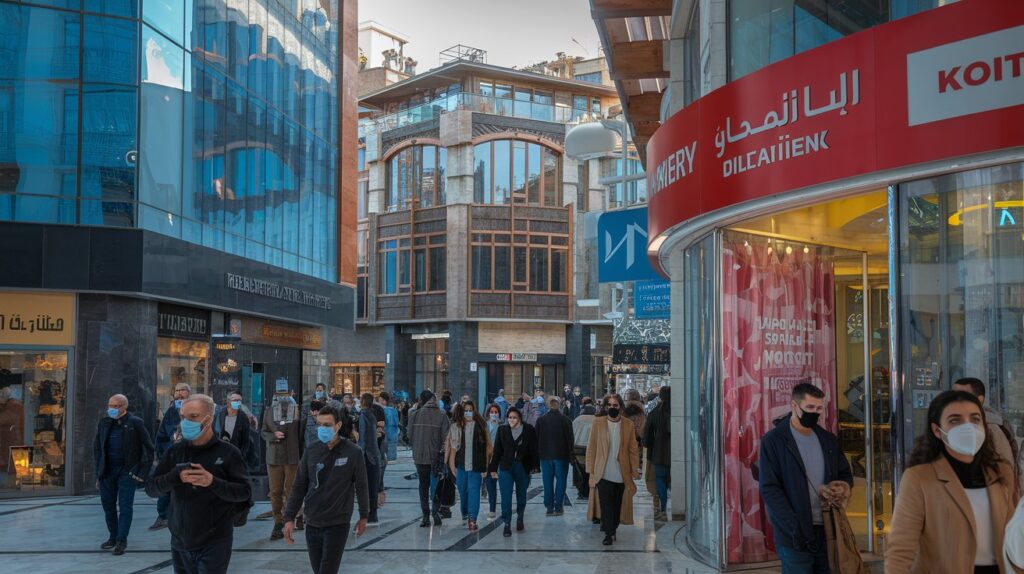Step into Turkey in 2025, and you’re stepping into something more than a market. It’s a mosaic-economic forces, regulatory shifts, and digital acceleration colliding beneath the surface of seaside villas and glassy skyscrapers. Whether you’re a curious browser or an investment hawk, one thing’s clear: this isn’t the same old story. With platforms like Yektahomes.com offering curated listings and digital access to homes, plots, and penthouses, the path to ownership is shorter-but the journey, infinitely more layered.
Winds of Change: The Price Paradox
Numbers rise, but stories deepen.
At first glance, the data looks euphoric-residential property values across Turkey have leapt by 31.95% in January 2025 compared to the same time last year. A sizzling climb. But take a breath, adjust for inflation, and the picture warps: a real-term decline of 7.16%. What’s happening?
Inflation still looms like a silent tide, nudging the real returns downward even as price tags climb. But investors with sharper eyes see something else: value not just in today’s price, but in tomorrow’s transformation. Urbanization hasn’t paused. Construction hasn’t slowed. Population centers continue to swell. This is movement.
Right now, the national average sits at $825 per square metre. In three years, estimates place it well north of $1,000. And so, a question hangs in the air-are we at the midpoint of an upswing, or just at the base of a curve that hasn’t yet crested?
Rental Revenues: Steady Ascent
Yields-always the whisper behind the roar-are quietly ascending.
Turkey’s average gross rental return in Q1 2025 reached 7.41%, up from 7.14% the year before. It’s not a leap, it’s a lean-a subtle but significant turn toward stronger rental profitability. Beneath that national average, however, lies a web of regional contrasts. Coastal areas glimmer with short-term letting potential. Inland cities ride the rhythm of population drift and industrial sprawl.
| Metric | Value (2025) |
| Average price per m² (national) | $825 USD |
| Projected price per m² by 2028 | > $1,000 USD |
| Nationwide gross rental yield | 7.41% |
| Top city price per m² (Istanbul) | $1,256 USD |
| Top city rental yield (Antalya) | 7.2% |
| Foreign buyer share of transactions | ~20% |
The Foreign Investor: Fewer Passports, Sharper Moves
Once upon a time, the buzz was all about passports. Buy a house, get a second citizenship. That playbook is fading. Today’s foreign investor is less interested in flag theory, more focused on yield curves, liquidity cycles, and exit strategies.
Turkey hasn’t closed the door. Far from it. Property laws remain hospitable-foreigners still buy on equal terms with citizens. Deed registration has become a faster affair, especially in designated zones where tax relief and incentives sweeten the deal. But the buyer profile? That’s changed. Investors now speak the language of rental income, capital gains, and geopolitical hedging.
Pay in euros. Hedge in dollars. Hold in lira. Everything’s in play.
Cities to Watch: Not One Market, But Many
Istanbul
This is the heartbeat. Turkey’s largest city accounts for more than a quarter of the country’s residential sales. But the real action is in the nuance. Bespoke luxury apartments? Look to Beşiktaş or Şişli. High-yield commuter flats? Head further out-development zones are expanding fast, and with them, rental demand.
Antalya
Summer playground. Mediterranean magnet. Property prices here are not for the faint of heart, but neither are the returns. Short-term lets during the tourist high season often clear 8% yields. Villas dominate the high end, but apartments-especially near the beach-remain liquid and popular.
Izmir
Call it up-and-coming, but it’s already halfway there. Tech companies are planting flags. Infrastructure is catching up. Prices remain accessible, but competition is rising. Modern housing, suburban developments, and livability factors are driving migration-and investment.
Bursa
Quietly industrial, unassuming-but no less promising. Proximity to Istanbul adds weight, while Bursa’s expanding automotive sector pumps life into the local housing market. Think functional over flashy, and long-game over short flip.
Green, Smart, and Sold Out
In the hills near Bodrum, a new story unfolded.
A Turkey developer in 2025 launched an eco-certified villa complex-solar panels feeding common areas, rainwater flowing into garden irrigation systems, homes wired for remote security and temperature control. The project? Gone in weeks.
What’s telling isn’t just the speed. It’s the appetite. Buyers are beginning to favor function alongside form. Energy efficiency isn’t a perk-it’s a priority. Green-certified properties are no longer luxury’s eccentric cousin. They are mainstream, profitable, and increasingly in demand.
Rules of the Game: 2025 Edition
If you’re buying in 2025, you’re stepping into a smarter, more dynamic marketplace. These are your new rules:
- Don’t go in blind. Work only with agents registered with Turkey’s official chamber. Vet them thoroughly.
- Inspect the paperwork. Zoning, titles, outstanding debts-cut no corners.
- Push for flexibility. Payment in stages, especially for off-plan developments, is common-and negotiable.
- Use your strongest currency. Lira can fluctuate wildly. Euro or USD deals offer peace of mind.
- Decide your purpose. Income or capital? Flip or hold? Define your strategy before you swipe the deposit.
Final Take: The Market Beneath the Market
There are two markets in Turkey right now. The one in headlines-rising prices, inflation woes, foreign buyers. And the one beneath-the market of lived realities, micro-trends, data fragments, and bold decisions.
This is not a market for the passive. It’s for the tuned-in. The curious. The agile.
From the villa terraces of Antalya to the smart flats in suburban Istanbul, Turkey in 2025 isn’t just selling real estate. It’s offering a glimpse into its future-a future where sustainability, technology, and diversification shape not only how people buy, but why.
With clarity, courage, and a bit of timing, the opportunity is real. So is the reward.

